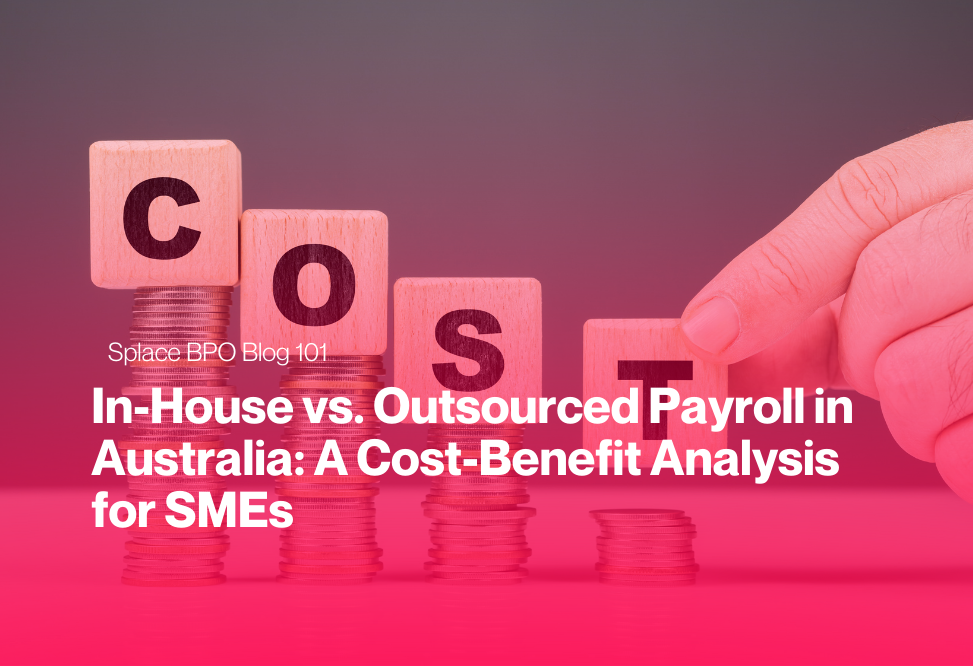For small and medium-sized enterprises (SMEs) in Australia, managing payroll is a vital function — but also one that can be complex, time-consuming, and costly if not handled correctly. Choosing between running payroll in-house or using payroll outsourcing services involves weighing both the financial and operational impacts on your business.
This cost-benefit analysis will help you understand the pros and cons of each approach so you can make an informed decision.
In-House Payroll: The Pros and Cons
Advantages:
- Control & Visibility – All payroll data remains within your business, and you have direct oversight of every step.
- Immediate Access – Any payroll-related queries can be handled internally without relying on an external provider.
- Customisation – Processes can be tailored specifically to your business needs without aligning to a third party’s system.
Disadvantages:
- Time-Consuming – Payroll processing takes significant time away from core business activities.
- Compliance Pressure – Staying updated with Fair Work legislation, ATO reporting requirements, and superannuation rules can be challenging.
- Higher Long-Term Costs – Salaries for payroll staff, software subscriptions, and ongoing training can add up.
Outsourced Payroll: The Pros and Cons
Advantages:
- Expertise & Compliance – Providers stay updated with Australian payroll regulations, reducing the risk of costly errors.
- Cost Efficiency – Instead of paying salaries and benefits for in-house staff, you pay a fixed service fee.
- Scalability – Easily adjust services as your business grows without hiring additional staff.
- Time Savings – Your team can focus on growth, operations, and customer service instead of admin tasks.
Disadvantages:
- Less Direct Control – You rely on a third party to process payroll accurately and on time.
- Data Sharing – Sensitive employee information must be securely transmitted to the provider.
- Integration Needs – Systems and processes may need to be aligned with the provider’s tools.
Cost Considerations
When comparing costs, it’s important to look beyond the immediate price tag:
- In-House costs include staff salaries, benefits, training, software licences, and compliance tools.
- Outsourced costs typically involve a per-employee or monthly service fee, which may be lower than maintaining an in-house payroll team.
For many SMEs, outsourcing proves more cost-effective in the long run, especially when factoring in the value of time saved and the reduced risk of penalties for non-compliance.
Cost Considerations
- Choose in-house payroll if you require complete control, have the expertise and resources to ensure compliance, and prefer keeping all processes internal.
- Choose outsourced payroll if you want to save time, reduce compliance risks, and free up resources for other parts of your business.
Bottom Line
Both in-house and outsourced payroll have their advantages, but for many Australian SMEs, outsourcing offers a cost-effective, efficient, and compliant solution. Splace BPO provides reliable payroll services for small businesses, ensuring every pay run is accurate, secure, and on time — so you can focus on growing your business with confidence.
About Splace BPO
Splace BPO delivers outsourcing solutions that streamline operations, strengthen customer engagemnt, and enable sustainable growth for clients worldwide. With a focus on flexibility, service quality, and measurable results, Splace BPO partners with businesses to meet today’s needs and prepare for the opportunities ahead.
📧 info@splacebpo.com
🌐 www.splacebpo.com















